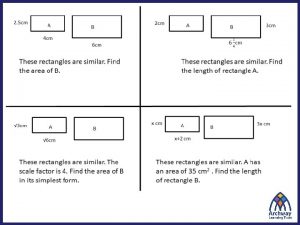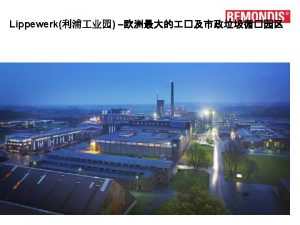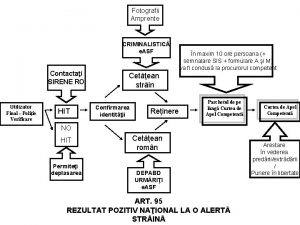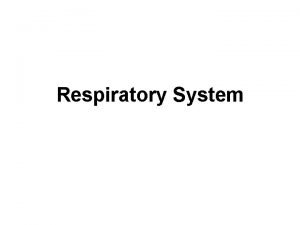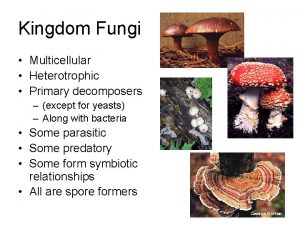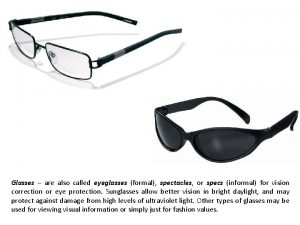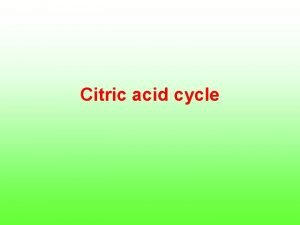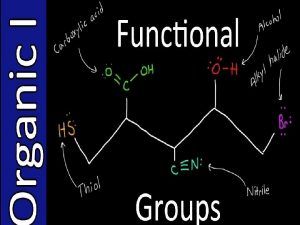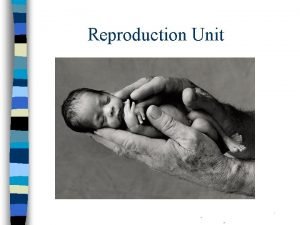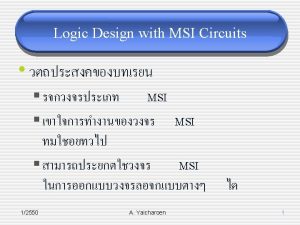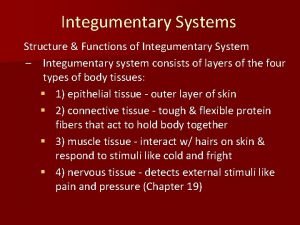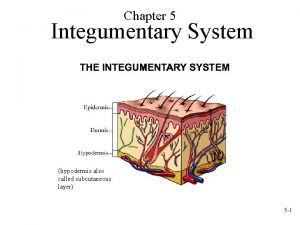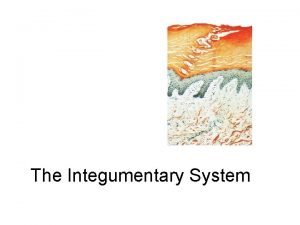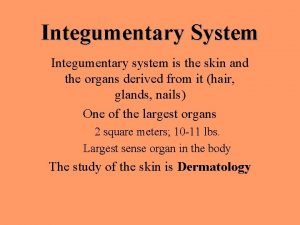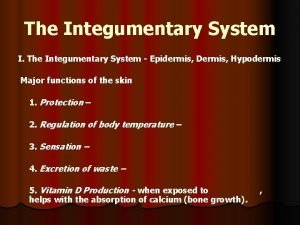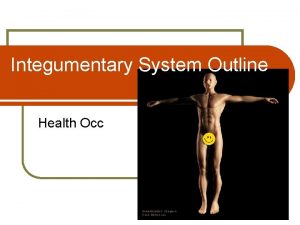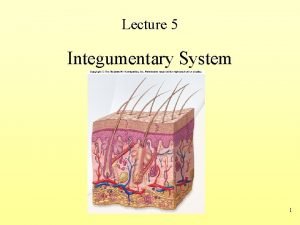INTEGUMENTARY SYSTEM ASF Integumentary system Also called the





























- Slides: 29

INTEGUMENTARY SYSTEM ASF

Integumentary system Also called the Skin. – Largest organ in the body. – The tissue that covers and protects the body. – Made up of from two layers. Epidermis Dermis – Other Body membranes Mucus membrane. Serous membrane.

Functions of the skin. 1. Protection • • • Mechanical Biological Chemical 2. Cutaneous Sensation 3. Blood Reservoir 4. Regulation • Temperature 5. Metabolic • Vit D synthesis, calcium absorption. 6. Waste Removal

The layers of the Skin – Epidermis Outer layer of the skin. Formed of Stratified Squamous. Cells are called Keratinocytes due to the protein keratin. – very durable. This layer of the skin will replace itself (slough off) every 25 to 45 days.

– There are five distinct layers called stratum, to the epidermis. Stratum Stratum Basale Spinosum Granulosum Lucidum Corneum. – Thin skin there are only four layers. – Thick skin all five layers, and hairless

Stratum Basale Bottom layer Only one cell thick actively mitotic New cells are pushed upward to the surface – Other Cell in this layer. Melanocytes – Produce melanin in response to UV radiation. – Melanin granules are deposited into the surrounding cells in melanosomes. – Responsible for the color of our skin and protection.

Stratum Spinosum Cells in this layer are about 4 -6 layers thick. They begin to accumulate desmosomes which give the cells a spiny look. Other cell: – Langerhans' cell A macrophage that has entered the epidermis and waits for an encounter with an antigen.

Stratum Granulosum The cells are about 3 to 5 layers thick The cells become waterproofed and granular The cells also begin to die due to the distance from the blood source. Stratum Lucidum This layer is only present in thick skin. – Hands and Feet.

Stratum Corneum – Protective layer. – The outer most layer. – They form into dense sheets of cornified (horney) cells. – Usually about 20 to 30 layers thick. – These cells are filled with keratin and are waterproof.

Dermis Inner layer of the skin. Made from connective tissue. Contains all the nerves and blood supply. All glands, and hair follicles found here as well. – Two layers Papillary layer. Reticular layer.

Papillary Layer Located just below the Epidermis. Made from Areolar CT. Forms undulations called dermal papillae. – In these papillae there are many capillaries to feed the epidermis, and nerves.

Reticular Layer – Made form Dense Irregular CT. Our “hide”. – Thickest layer of the dermis. – Very vascular and innervated. Stretch marks. Dermal Folds (flexure line). Old age.

Skin color. – Given by the melanocytes. Pigment melanin. Moles and Freckles. Other colors. – Blue Cyanosis – Red Erythema – Blushing of the capillaries. – Burn.

Colors cont. – Paleness / Pallor Blanching – Pressure – Emotions – Due to loss of blood flow. – Yellow Jaundice – Liver disease. Bruises

Sudoriferous Glands Sweat Glands – Eccrine Sweat Glands Small glands that produce the clear sweat. 99% water, with Na, K, Cl, Ca, Ig. A, urea, and ammonia. Located all over the body. Hyperhidrosis Anhidrosis

– Apocrine Sweat Glands. Produce a milky fatty sweat at puberty. Responsible for the odor (BO). Axilla and groin. – Ceruminous Glands A modified gland. Produces cerumin or ear wax. Located in the ear canal. Protection: – Removes debris. – Repels insects.

Subaceous Glands Oil Glands. – Produce Sebum (oil). Helps to moisten and lubricate. Contains Lysozyme – Antibacterial enzyme Usually found on a hair follicle, but can be free forming a PORE.

Hair – Hair forms from a hair follicle which is held in place by connective tissue. – The bulb is where the hair begins, a small swelling. Pappilae – Where blood vessels and nerves are found in the hair bulb. – Melanocytes Cells produce hard keratin. – Arrector Pili Muscles Goose bumps

Hair cont. Hair growth is stimulated by nutrition and by Androgens. Cyclic growth. – Two types of hair. Vellus hair – Peach fuzz. Terminal Hair. – Course hair on the head, armpits, and groin. – Hair Loss Alopecia. Male pattern baldness. – Genetic

Nails – Originate from the nail matrix. A fold of epidermis. Protect the finger tips and toes. Clear cells with no pigment. – Hard keratin.

Skin Burns Measured by the Rule of Nine’s. – This helps to determine fluid loss. – Body is divided into areas of nine %. First Degree – Erythema and pain. Second Degree – Erythema, pain and blisters. – Involves both layers (partial thickness). Third Degree – Loss of the skin (full thickness) and no pain. – Severe risk due to fluid loss and infection.

Skin Cancer Benign vs. Metastatic – Basal cell carcinoma Least deadly type, most common. Forms in the basal layer. Usually forms a bump that will ulcerate. Slow growing, on the face. – Squamous Cell Carcinoma Forms at the spinosum layer. Scaly red bump that turns into an ulcer. Most common on the head and hands. Grows quickly and can be metastatic.

– Malignant Melanoma Most deadly but least common. Forms from the melanocytes. Color changes occur in the skin. May look like a mole. Very fast growing and metastatic. – ABCDE’s of skin cancer.

Body Membranes Cutaneous membrane – Outer layer of the skin. – Stratified squamous. Mucus Membrane – Covers the digestive and respiratory tract. – Goblet cells, and columnar cells. Serous Membrane – Covers the Ventral Body Cavity. – Covers all the organs Pleura, Pericardium, Peritoneum. Serous fluid Two layers Mesothelium and Areolar CT.

Tissue Repair Happens after injury or damage. – Occurs in three stages. – Inflammation Stage Tissue swells due to histamine release. Allows for: – area to be isolated. – WBCs to migrate to the area. – Increases blood flow for nutrients. Blood clot seals the wound and forms a scab.

– Granulation Stage WBCs remove the blood clot and damaged cells. Fibrocytes in the area secrete a soft granular tissue. – Fills gaps in the tissue. Allows the blood vessels, nerves, and Epithelium to bud, (re-grow into the area).

Regeneration Stage – Epithelium will regrow below scab to cover surface. – As epithelium develops it will push the scab outward.

– Fibrosis / Scar Tissue Development Occurs if damaged area is to large to for epithelium to regenerate. Fibrocytes secrete connective tissue to fill the gap. – This tissue will leave a scar. – Clean cuts heal much better than a ragged tear. Scar tissue is more sensitive and much less flexible.

Other Terms – Lanugo – Vernix Caseosa – Cradle Cap
 Lsf asf vsf
Lsf asf vsf Asf vertex
Asf vertex Asf freiburg
Asf freiburg Intermodal association of chicago
Intermodal association of chicago Histone pozitiv
Histone pozitiv Epra asf
Epra asf Pidgin language
Pidgin language Decimal system is also called as
Decimal system is also called as Uninformed search examples
Uninformed search examples Citric acid cycle also called
Citric acid cycle also called Specification-based testing
Specification-based testing Parts of the pharynx
Parts of the pharynx A workbook is also called a
A workbook is also called a What kingdom are decomposers in
What kingdom are decomposers in Formal spectacles
Formal spectacles It is also called figurative language
It is also called figurative language Centring diphthongs
Centring diphthongs Citric acid cycle definition
Citric acid cycle definition Axial movment
Axial movment Alkanes list
Alkanes list Status register is also called as
Status register is also called as Bus stop method long division
Bus stop method long division Womb is also called
Womb is also called Random scan system
Random scan system Data selector is also called
Data selector is also called A pie diagram is also called
A pie diagram is also called Womb is also called
Womb is also called Distinguish between formal and dynamic equivalence.
Distinguish between formal and dynamic equivalence. Pg 112
Pg 112 Womb is also called
Womb is also called
